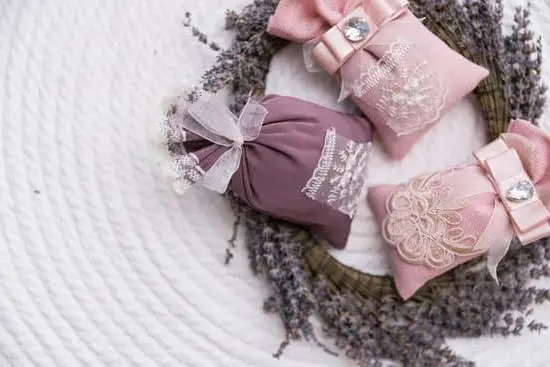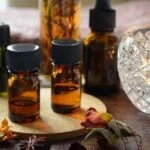Have you ever wondered how to provide an amazing aromatherapy session? Aromatherapy is a holistic healing treatment that uses natural plant extracts to promote health and well-being. In this article, we will explore the benefits of aromatherapy, its rich history, and how to set the stage for an unforgettable aromatherapy session. Whether you are a professional practitioner or simply interested in trying aromatherapy for yourself, this guide will provide the essential knowledge and techniques for a truly amazing experience.
Aromatherapy has been used for centuries as a natural remedy for various ailments and as a way to enhance physical, mental, and emotional well-being. By harnessing the therapeutic properties of essential oils, aromatherapy can help reduce stress, improve sleep quality, alleviate pain, and uplift mood. Understanding the origins and benefits of aromatherapy will lay the foundation for creating an exceptional session that meets the needs of your clients or yourself.
In addition to exploring the benefits of aromatherapy, we will also delve into the world of essential oils. Understanding what essential oils are, their properties, and how to choose the right ones is crucial for providing an effective and enjoyable aromatherapy experience. From creating the perfect ambiance to conducting a thorough client consultation and applying proper techniques during the session, this guide will equip you with all the necessary information for ensuring an amazing aromatherapy experience.
Understanding Essential Oils
What Are Essential Oils and Their Properties
Essential oils are concentrated plant extracts that retain the natural aroma and beneficial properties of the plant they are derived from. These oils are typically extracted through methods such as steam distillation or cold pressing, resulting in a highly potent and aromatic substance. Each essential oil contains its own unique combination of compounds, giving it specific therapeutic properties.
Different Types of Essential Oils Used in Aromatherapy
There is a wide variety of essential oils used in aromatherapy, each with its own distinct fragrance and therapeutic benefits. Some of the most popular essential oils used in aromatherapy include lavender for relaxation, peppermint for invigoration, and tea tree for its antiseptic properties. Other common essential oils used in aromatherapy include chamomile, eucalyptus, lemon, and rosemary, each offering its own set of healing properties.
How to Choose the Right Essential Oil for the Session
When selecting the appropriate essential oil for an aromatherapy session, it’s crucial to consider both the client’s needs and preferences as well as the therapeutic effects of each oil. For example, if a client is seeking relaxation and stress relief, calming oils like lavender or chamomile may be suitable choices.
On the other hand, if a client is looking to invigorate their senses and boost energy levels, stimulating oils like citrus or peppermint may be more appropriate. Additionally, it’s important to take into account any potential allergies or sensitivities that the client may have when choosing an essential oil for the session.
By understanding the different types of essential oils and their properties, practitioners can effectively select the right oils to create a customized aromatherapy experience that meets the specific needs and desires of their clients. This knowledge forms an essential part of how to provide an amazing aromatherapy session.
Creating the Perfect Ambiance
Next, consider using tools such as diffusers, candles, and soothing music to enhance the ambiance. A diffuser can help spread the aroma of essential oils throughout the room, while candles can add a warm and comforting glow. Soft instrumental or nature sounds can also contribute to a peaceful atmosphere. These elements combined can create an oasis of calm and tranquility that will elevate the aromatherapy session to new heights.
Additionally, it’s important to consider any potential allergies or sensitivities your client may have when setting up the ambiance. Ensure that any scents used are not overpowering or irritating, and always ask the client beforehand if they have any specific preferences or concerns. By paying attention to these details and tailoring the environment to the client’s needs, you can create a truly personalized experience that will leave them feeling rejuvenated and at peace.
| Element | Description |
|---|---|
| Calming Environment | Create a tranquil space with comfortable seating and soft lighting |
| Ambiance Tools | Use diffusers, candles, and soothing music to enhance the environment |
| Allergies & Sensitivities | Paying attention to potential allergies or sensitivities of the client when setting up ambiance |
Preparing the Client
Conducting a Thorough Consultation and Assessment
Before any aromatherapy session, it is crucial to conduct a thorough consultation and assessment with the client. This involves gathering information about the client’s medical history, current health conditions, and any medications they may be taking. Understanding the client’s physical and emotional state will help tailor the aromatherapy session to meet their specific needs and ensure a safe and effective experience.
Explaining the Process and Benefits of Aromatherapy
As part of preparing the client, it is essential to explain the process and benefits of aromatherapy. Educate the client about how essential oils work to support physical, mental, and emotional well-being. This can help alleviate any apprehensions or uncertainties they may have about undergoing an aromatherapy session. By providing this information, you are empowering the client to fully engage in the experience and receive maximum benefit from the session.
Addressing Any Concerns or Allergies
During the preparation phase, it is important to address any concerns or allergies that the client may have. Some individuals may have sensitivities to certain scents or ingredients in essential oils. By discussing any potential issues beforehand, you can make informed decisions about which essential oils to use during the session. Additionally, being proactive in addressing these concerns demonstrates your commitment to providing a safe and comfortable environment for the client.
By following these steps in preparing the client for an aromatherapy session, you can ensure that they are fully informed and comfortable before beginning their wellness journey. Being attentive to their individual needs sets the stage for an amazing aromatherapy experience that is tailored to promote their overall well-being.
Techniques for Aromatherapy
Aromatherapy involves the use of essential oils to promote physical and mental well-being. There are several techniques for providing an amazing aromatherapy session that can help clients experience the full benefits of this ancient healing practice. One common method is through massage, where diluted essential oils are applied to the skin and absorbed into the bloodstream, providing both physical and emotional benefits.
Another technique is inhalation, where the aromatic molecules of essential oils are inhaled to stimulate the olfactory system and promote relaxation or alertness, depending on the oil used. Additionally, diffusion is a popular method where essential oils are dispersed into the air using a diffuser, creating a therapeutic atmosphere.
When providing an amazing aromatherapy session, it’s important to understand how to properly dilute essential oils for safe use. Essential oils are highly concentrated and can cause skin irritation or adverse reactions if not diluted correctly. The general rule of thumb is to use a carrier oil (such as coconut or jojoba oil) as a base and add a few drops of essential oil to create a safe blend for topical application.
Moreover, understanding how different essential oils interact with each other is crucial for creating custom blends that cater to the client’s specific needs and preferences. Some oils complement each other well, while others may clash or have adverse effects when combined.
Blending essential oils requires knowledge of their properties and therapeutic benefits. For example, lavender is known for its calming and soothing properties, while peppermint is invigorating and refreshing.
By combining these two oils in the right proportions, it’s possible to create a custom blend that promotes relaxation while also providing a boost of energy. When blending oils for an aromatherapy session, it’s important to consider the client’s preferences as well as any specific concerns they may have, such as stress relief, pain management, or improving sleep quality.
| Aromatherapy Technique | Key Points |
|---|---|
| Massage | Dilute essential oils properly for safe topical use |
| Inhalation | Select appropriate essential oils for desired effects |
| Diffusion | Create a therapeutic atmosphere with proper oil combinations |
The Aromatherapy Session
Now that the perfect ambiance has been created and the client is prepared, it’s time to dive into the aromatherapy session itself. This is where the magic happens and where you’ll have the opportunity to provide an amazing sensory experience for your client. Here are some steps and techniques for conducting a truly exceptional aromatherapy session:
- Begin by inviting the client to relax and take a few deep breaths to start the relaxation process.
- Next, apply the chosen essential oils using your preferred method, whether it’s through gentle massage, inhalation, or diffusion throughout the room.
- As you apply the essential oils, explain to the client what they are experiencing and how each oil will benefit them. Encourage them to take deep breaths and fully embrace the aromas.
The key to providing an amazing aromatherapy session is to be attentive to your client’s needs and preferences throughout. Pay attention to their reactions and adjust your approach accordingly. Some clients may prefer a more hands-on approach with massage techniques, while others may simply want to breathe in the calming scents.
Remember that communication is key during this session. Check in with your client regularly, ask about their comfort level, and make any necessary adjustments. By creating a sense of trust and open communication, you can ensure that your client feels completely at ease and is able to fully benefit from the aromatherapy experience.
Lastly, as you conclude the session, offer some aftercare advice for additional relaxation and stress relief at home. Provide recommendations for specific essential oils or blends they can use on their own, as well as tips for continuing to benefit from the effects of the session.
By following these steps and techniques for providing an amazing aromatherapy session, you can create a truly transformative experience for your clients while promoting their overall well-being.
Post-Session Care
After a rejuvenating aromatherapy session, it is essential to provide post-session care to ensure that the client continues to benefit from the experience. Here are some tips for helping the client maximize the effects of the session:
- Hydration: Encourage the client to drink plenty of water after the session to help flush out any toxins released during the session and to stay hydrated.
- Rest: Advise the client to rest and relax after the aromatherapy session to allow their body and mind to fully absorb and integrate the healing benefits of the essential oils.
- Self-Care Practices: Suggest self-care practices such as meditation, gentle stretching, or a warm bath with essential oils to prolong the feelings of relaxation and well-being.
In addition to these tips, providing aftercare advice can further support the client in continuing to experience the benefits of aromatherapy. This may include recommending specific essential oils for home use based on their individual needs, as well as guidance on safe and effective application methods.
It is also important to follow up with the client after their aromatherapy session. Checking in with them allows you to ensure their satisfaction with the experience, address any concerns they may have, and gather feedback that can be used to improve future sessions. This thoughtful follow-up demonstrates your commitment to their well-being and enhances their overall experience with aromatherapy.
Ultimately, post-session care plays a crucial role in extending the positive effects of an aromatherapy session beyond its duration. By providing ongoing support and guidance, you can empower your clients to continue reaping the benefits of aromatherapy long after their session has ended.
Conclusion and Resources
In conclusion, providing an amazing aromatherapy session requires a combination of knowledge, skill, and the right environment. Understanding the benefits and history of aromatherapy, as well as the properties and types of essential oils, is crucial for creating a personalized session that meets the client’s needs.
Creating the perfect ambiance through calming music, diffusers, and soothing lighting sets the stage for a truly relaxing experience. In addition, properly preparing the client through consultation and assessment allows for a tailored session that addresses their specific concerns and preferences.
During the actual session, it is important to employ various techniques for applying essential oils such as massage, inhalation, or diffusion. Properly diluting essential oils and blending them to create custom aromatherapy blends also adds to the personalized experience. The post-session care is equally important, as providing aftercare advice and following up with the client ensure that they continue to benefit from the aromatherapy session.
For those interested in learning more about aromatherapy and essential oils or seeking out professional sessions, there are many additional resources available. Whether it be books, websites, or courses on aromatherapy techniques and methods – there are plenty of opportunities to further educate oneself in this ancient healing practice.
I encourage readers to consider trying out aromatherapy for themselves or seeking out a professional for a session in order to experience its rejuvenating effects firsthand. Providing an amazing aromatherapy session may seem daunting at first but with knowledge and practice, it can become an incredibly rewarding skill to offer others.

Are you looking for a natural way to improve your health and wellbeing?
If so, aromatherapy may be the answer for you.





